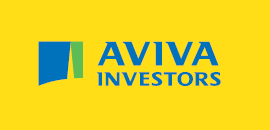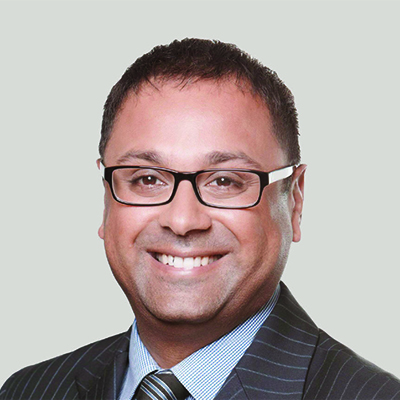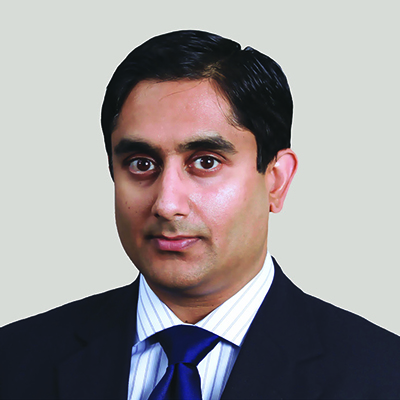Benefits Canada asked Aviva Investors’ Rahul Khasgiwale, senior investment director for North America, and Sunil Shah, head of Canadian fixed income, to share their insights on investment and risk-management opportunities for Canadian plan sponsors.

“Today, we have a broadly positive outlook on the global economy and growth, but we recognize that there are large risks to this core macroeconomic house view.RAHUL KHASGIWALE
SENIOR INVESTMENT DIRECTOR, NORTH AMERICA

“As a global asset manager, Aviva Investors is uniquely able to lower risk … by reducing reliance on and concentration in Canadian only investment themes.SUNIL SHAH
HEAD OF CANADIAN FIXED INCOME
WHAT IS YOUR APPROACH TO MANAGING RISK IN A WORLD IN WHICH ASSET CLASSES ARE INCREASINGLY CORRELATED?
RAHUL: In this environment, we think it is prudent for plan sponsors to consider an unconstrained global multi-strategy approach at the total portfolio level, where traditional equity and fixed-income asset classes are complemented by alternative strategies such as volatility, inflation, currency and relative-value strategies. We believe that’s a prudent way to build a well-diversified portfolio that can target a good level of return with much lower total portfolio risk than the equity market. This type of approach can also play an important role in preserving capital during unexpected market shocks when traditional asset classes are often increasingly correlated. For example, volatility strategies may generate positive returns in risk-off markets, which can help offset negative returns that may be seen from traditional asset classes. We refer to these as “risk-reducing” return ideas.
SUNIL: As a global asset manager, Aviva Investors is uniquely able to lower risk in its Canadian Core and Core Plus fixed-income strategies by reducing reliance on and concentration in Canadian-only investment themes. For example, despite the high correlation within global credit markets, having a wider issuer and sector opportunity set to choose from can provide meaningful downside protection versus a Canadian-only opportunity set in certain market scenarios. The wider the opportunity set is, the greater the ability to lower risk. The approach of generating risk-reducing return ideas can also be applicable to traditional long-only fixed income.
WHAT DIFFERENTIATES AVIVA INVESTORS’ APPROACH TO PORTFOLIO MANAGEMENT?
RAHUL: Our three Cs: commitment, creativity and construction. For example, our global multi-strategy target return strategy draws on the commitment of our entire investment platform for idea generation. That platform includes over 400 portfolio managers and analysts across 15 offices globally. Creativity refers to the way investment professionals bring together expertise in different asset classes, collaborate, discuss and generate investment ideas that are free from benchmark constraints. Finally, we elevate portfolio construction to the same prominence as idea generation. Our dedicated portfolio construction and risk team sits beside our portfolio managers to provide daily risk insights. They use historical and forward-looking stress-testing, scenario analysis and pre-trade risk assessment, among other sophisticated techniques, to assist in building resilient and robust portfolios.
HOW DOES AVIVA INVESTORS SEEK TO ADD VALUE IN CANADIAN FIXED INCOME?
SUNIL: The Canadian fixed-income universe represented by the FTSE TMX Universe Bond Index is highly concentrated in terms of sectors and issuers, and limited in breadth given the profile of bond issuance domestically.
For example, the provincial sector contributes over 60% of spread duration and about half of total duration in the index. Similarly, the Province of Ontario, the largest non-federal issuer, represents over 18% of duration contribution in the index. A manager that has a constructive view of provincials may overweight the sector (or Ontario) meaningfully and, for no other reason than index composition, the portfolio would have a high degree of exposure to the sector, thereby increasing total portfolio risk for the underlying plan sponsor. The corporate side of the index displays the same phenomenon, where there are large sector and issuer concentrations of exposure (e.g., Canadian banks). On the bright side, the Maple market (non-Canadian issuers accessing Canadian-dollar funding) is growing once again. However, it pales in size relative to the $1.6 trillion Canadian bond universe and $427 billion Canadian corporates.1 Aviva Investors is one of the few Canadian fixed-income managers with local and global offices, and is uniquely positioned to adeptly leverage opportunities within both the Maple market and non-Canadian-dollar credit markets. This allows clients to benefit from our best sector and issuer selection ideas inside and outside Canada, while avoiding meaningful concentration in Canadian themes. This is especially important given that traditional Canadian bank debt is poised to disappear and be replaced by debt that is convertible into equity at the discretion of the Office of the Superintendent of Financial Institutions (OSFI).
ARE THERE AREAS OF THE MARKET THAT CANADIAN PLAN SPONSORS TEND TO MISS OUT ON?
RAHUL: Canadian plans have made good progress in broadening their asset mix over the recent years. However, there is arguably further room to diversify further from Canadian core fixed income into areas such as global
fixed income and multi-asset credit and even beyond fixed income into absolute return and other liquid alternative asset classes. Allocations to emerging market equity and emerging market debt are also worth consideration.
SUNIL: Historically, Canadian plans have been averse to increasing out-of-benchmark limitations in fixed-income plan policy guidelines and also to using derivatives to hedge currency or interest rate risk. Unfortunately, overly restrictive barriers may incentivize managers to seek higher risk strategies that may not be commensurate with the opportunity set. Fortunately, plan sponsors are beginning to recognize the limitations of such restrictions and an overall mindset change is creating demand for more Core Plus fixed-income investment options.
ARE THERE LESSONS THAT SMALLER PLANS CAN LEARN FROM LARGER PLANS?
RAHUL: Many smaller plans continue to employ some version of a traditional 60% equity/40% fixed-income balanced portfolio, which has generally served plans well over the last few decades. But will it over the next decade, when equity and fixed-income returns may be challenged? Larger plans are diversifying portfolios by utilizing liquid alternative strategies such as multi-strategy target return. These strategies are now much more accessible to smaller plans and can provide daily liquidity, full transparency and a flat fee structure.
SUNIL: Finding a manager with “boots on the ground” in Canada and globally with the capacity to tap into a broader fixed-income opportunity set is a challenge for all plans, especially smaller ones. Any Canadian investment manager can trade any non-Canadian securities with global counterparties – but it’s important to invest in these securities credibly and construct a portfolio informed by global knowledge, analytical insight and a robust and consistent investment process across the firm. Aviva Investors, with its globally integrated team of portfolio managers and research analysts, offers that rigour.
WHAT IS THE NEXT BIG THING IN INSTITUTIONAL INVESTING?
RAHUL: Our portfolio managers are always thinking about the Next Big Risks and how to manage them. Today, we have a broadly positive outlook on the global economy and growth, but we recognize that there are large risks to this core macroeconomic house view. For example: the U.S. Federal Reserve may increase rates too quickly or too slowly; an acceleration in the nationalist agenda across the globe could create greater trade protection and isolationist measures; China’s growth may experience a hard landing; and there are debt deleveraging vulnerabilities in many countries as global interest rates rise. Our focus is therefore on building portfolios that remain resilient if any of these risk scenarios play out.
1 Source: FTSE TMX Global Debt Capital Markets Inc. and Aviva Investors as of June 15, 2017.
Important information:
Except where stated as otherwise, the source of all information is Aviva Investors Canada, Inc. (“AIC”)
as of June 15, 2017. Unless stated otherwise any views, opinions and future returns expressed are those of
Aviva Investors and based on Aviva Investors internal forecasts. They should not be viewed as indicating
any guarantee of return from an investment managed by Aviva Investors nor as advice of any nature. The
value of an investment and any income from it may go down as well as up and the investor may not get back
the original amount invested. Past performance is not a guide to future returns.
AIC is located in Toronto and is based within the North American region of the global organization of
affiliated asset management businesses operating under the Aviva Investors name. AIC is registered with
the Ontario Securities Commission (“OSC”) as a Portfolio Manager, and an Exempt Market Dealer.
Aviva Investors is a global asset management firm comprised of a group of affiliated companies, each of
which is regulated in the jurisdiction in which it operates. Each Aviva Investors affiliate is a subsidiary
of Aviva plc, a publically traded multi-national financial services company headquartered in the United
Kingdom (UK).
There are risks associated with all investments and those risks may be higher for strategies investing in
alternative, derivatives and small cap asset classes.




